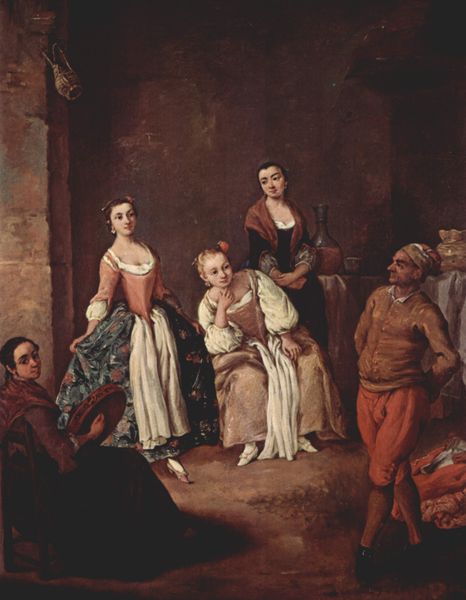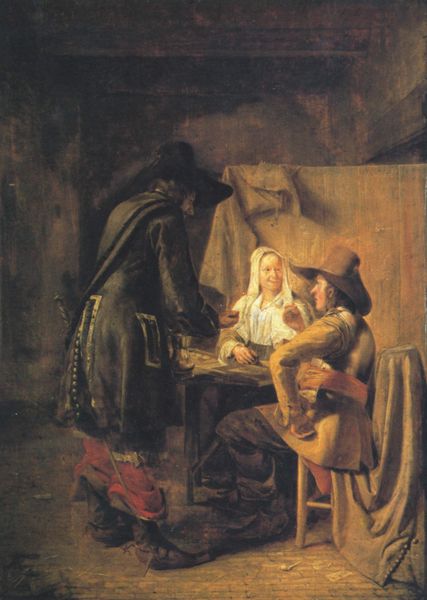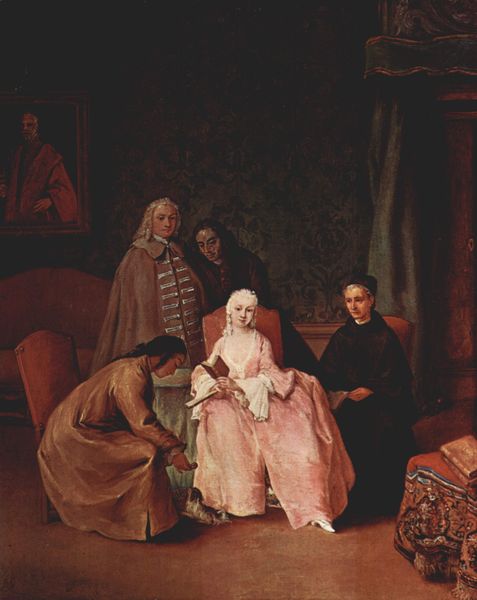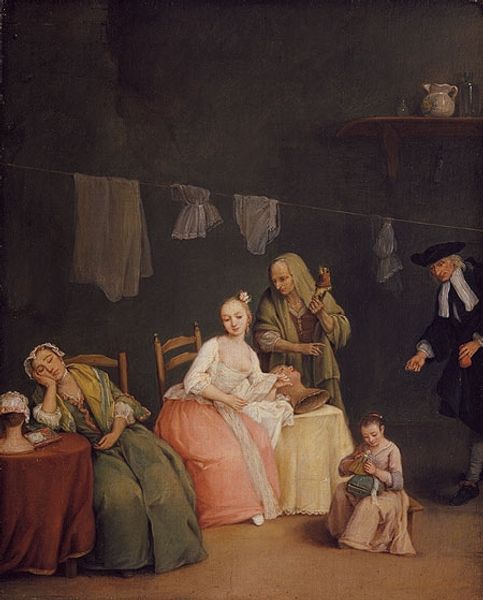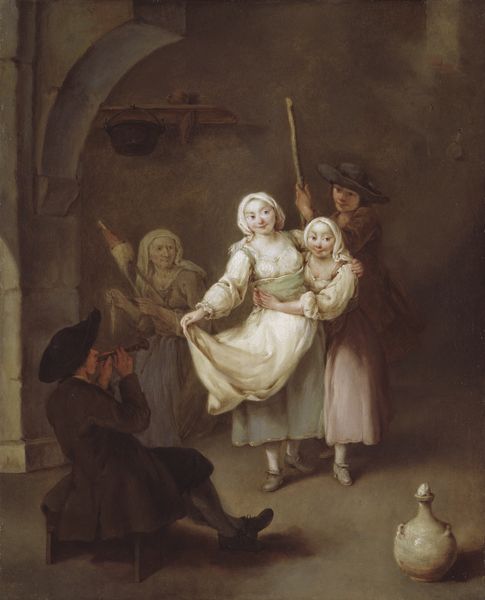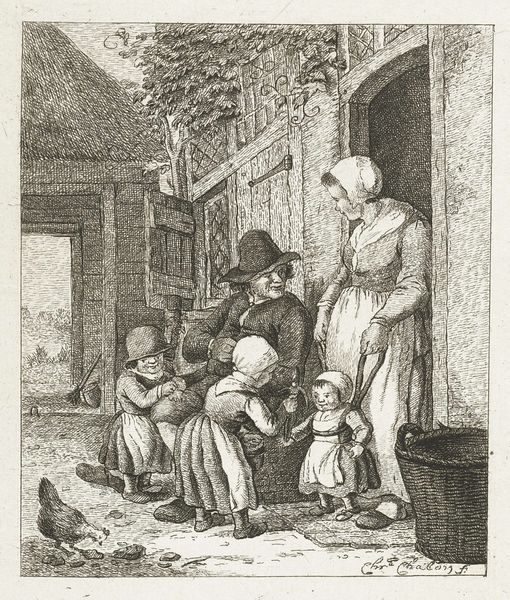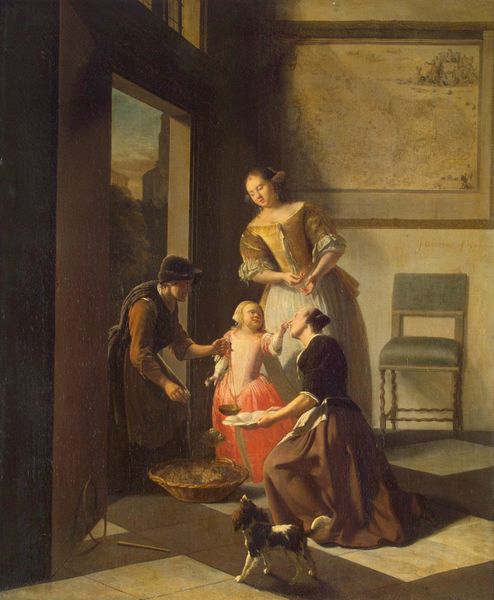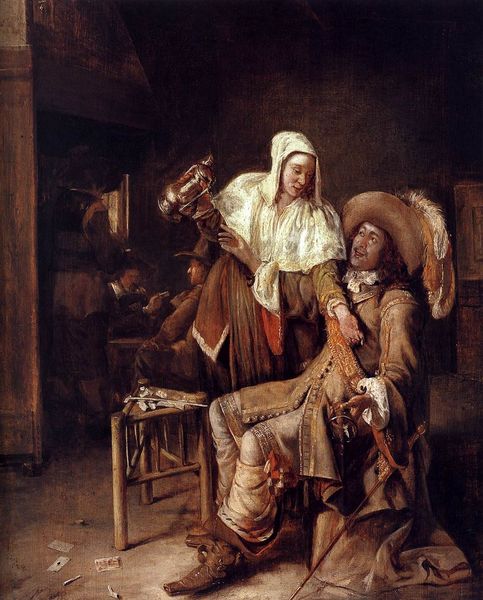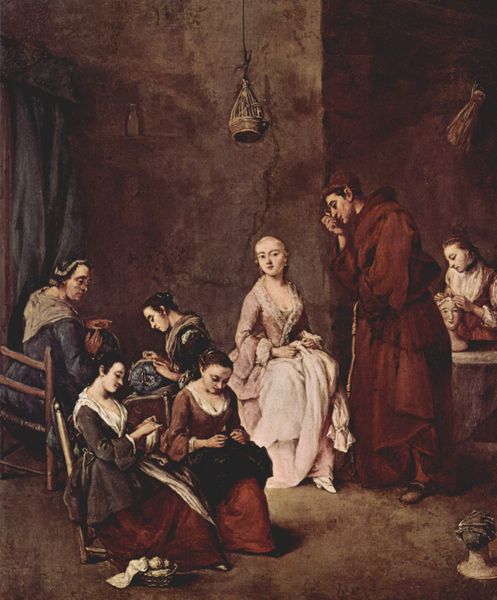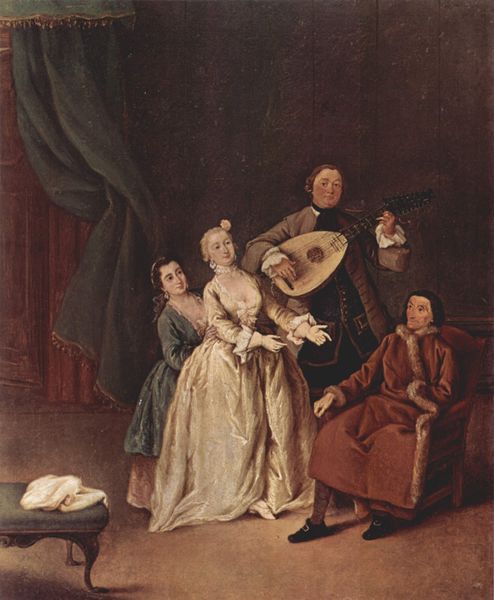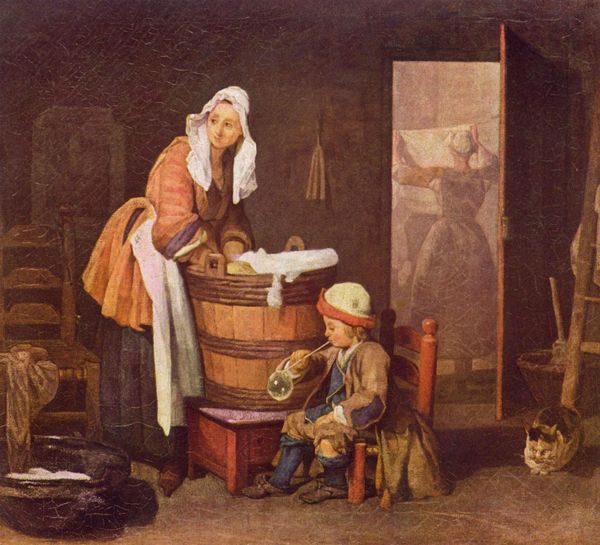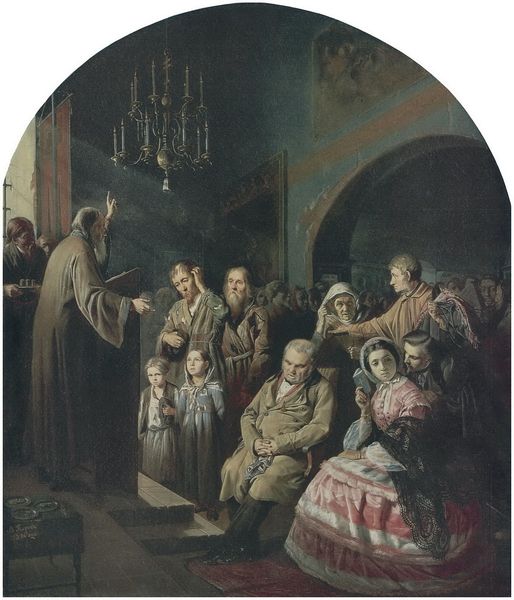
painting, oil-paint
#
portrait
#
venetian-painting
#
painting
#
oil-paint
#
figuration
#
genre-painting
#
rococo
Copyright: Public domain
Curator: Welcome to Ca’ Rezzonico, home to Pietro Longhi’s painting “Women Sewing.” Look closely and you'll find it offers a glimpse into the domestic life of 18th-century Venice. Editor: My first impression is of hushed activity. The scene feels both intimate and oddly staged, almost like a play frozen in time. There's a certain tension between the apparent leisure of some figures and the labor of others. Curator: Exactly! Longhi specialized in genre paintings, these snapshots of everyday Venetian life, particularly the lives of the aristocracy. It’s interesting how he depicts women's roles and the social hierarchy within the household. Editor: I'm immediately drawn to the women bent over their work. They're positioned in the lower left, almost relegated to the shadows. It speaks volumes about the unseen labor upon which the leisured class depended. The presence of what looks to be a well-to-do couple seems almost like an intrusion into the working women’s space. Curator: And what about that older woman offering the basket of goods, perhaps a dowry. It underscores the economic underpinnings of marriage at the time. This seemingly benign scene hints at much larger social structures. Note, for example, the details in the Rococo style— the soft light, the delicate fabrics. It romanticizes reality, but perhaps intentionally obscures social realities as well. Editor: Absolutely, the Rococo aesthetic feels deliberately at odds with the realities of labor shown in the background. There’s an almost voyeuristic quality to the painting, the viewer peering into a scene that reveals both privilege and constraint. It sparks crucial questions about agency and representation. How much control did these women, in the painting and likely in life, have over their circumstances? Curator: I agree. And Longhi presents us with a captivating window into the power dynamics that defined Venetian society. His work has a clear visual appeal that might even make it harder for viewers to really see the whole context of it. Editor: In looking at "Women Sewing", I find myself compelled to consider all the layers beneath its genteel surface – the unspoken stories, the unseen hands, the complexities of power and privilege that resonate even now. Curator: Indeed. It’s a perfect example of how art can both reflect and perpetuate the values of its time, leaving us to question its historical narratives.
Comments
No comments
Be the first to comment and join the conversation on the ultimate creative platform.
